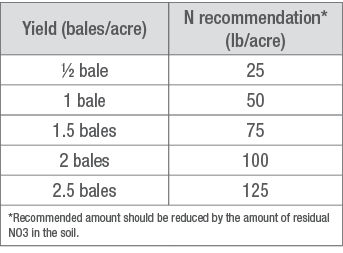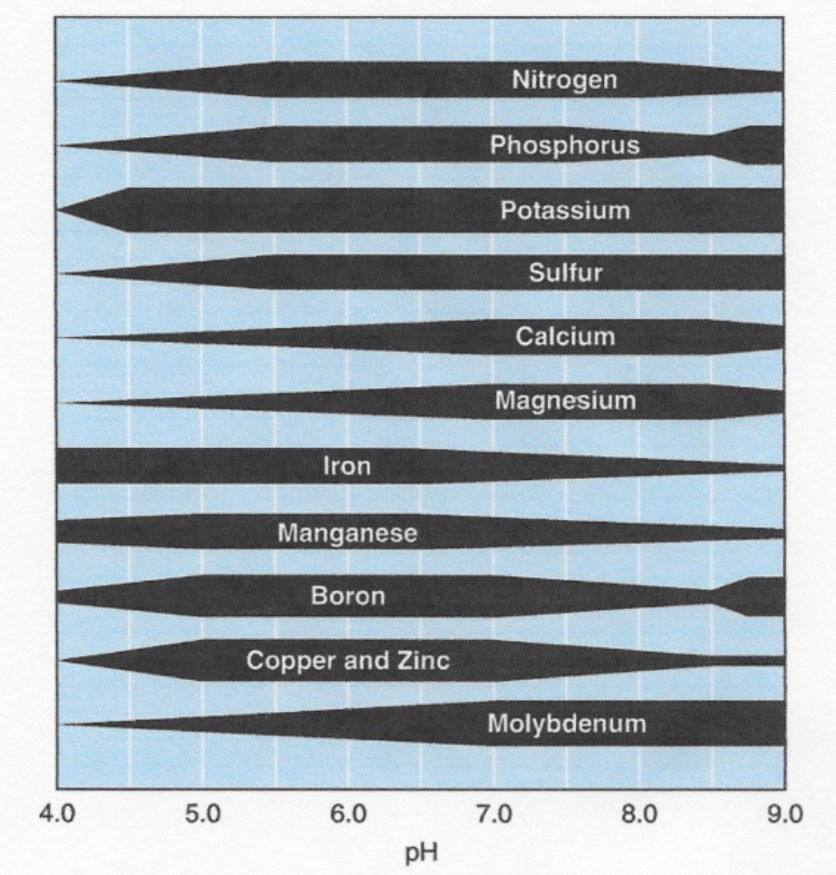5 MIN READ
Cotton Fertility
May 7, 2022
Introduction
The amount of fertilizer applied annually for cotton production should be based on the following:
- A realistic yield goal
- A soil test for residual nitrate (NO3) to a depth of two feet every year
- A soil test for other essential plant nutrients at least every other year
- Split nitrogen (N) applications to improve N-use efficiency, especially on sandy soils1
Nitrogen (N)
In cotton, the most often applied nutrient, and commonly the most expensive, but also the one most difficult to manage, is N.
N deficiency can cause:
- Reduced leaf size
- Reduced number of fruiting nodes
- Poor fruit retention
- Reduced yield and fiber quality
- Limited water and nutrient uptake
Excessive N availability can cause:
- Reduced yields
- Delayed maturity
- Excessive vegetative growth
- Decreased boll retention
- Lower fiber quality
- Increased pest problems
- Delayed boll opening
- Reduced defoliation
- Potentially polluted ground and surface water1
The first step to determine the amount of N cotton requires depends on the expected yield. The total amount of N required to produce a given yield is shown in Table 1.

A cotton nitrate fertilizer calculator that helps fine tune the amount of N applied for a certain yield goal that accounts for residual soil nitrate and irrigation nitrate credits is available on the Texas A&M AgriLife Extension Service Soil, Water & Forage Testing Laboratory website.2
The reason that N fertilizer recommendations are so difficult to make for a cotton crop is because total N applied is less important than the correct amount of N in all phases of plant growth and fruit development. Also, the deep-rooting ability of a cotton plant allows the tap root to penetrate well below the 2-ft rooting zone to tap into deep nitrate. Nitrate is very mobile in the soil and can be moved into that deep soil zone by water percolation through the soil from previous crops.
Very little N is used by the cotton plant in the seedling stage. The heaviest demand is during the fruiting stages of squaring and boll formation, usually around 80 days after planting, depending on heat unit accumulation and the maturity rating of the cotton product. This is the reason that N application is often split on irrigated cotton. One option is to apply 1/3 of the total N at planting, 1/3 at late square to early bloom, and 1/3 at near-peak bloom. Another option would be to side-dress about 25% of the seasonal total before bloom, 75% of the remaining total during boll development, and supplementing with foliar applications as boll load or plant needs indicate. On sandy soils, which are more subject to leaching, the side-dress N can be split, with 1/2 applied about four weeks after cotton emergence, and the remainder applied about four weeks later. The correct amount and timing of seasonal N for cotton will produce a timely N deficiency during fruiting cutout, which helps mature the crop for defoliation and harvest. Cutout is defined as when the terminal growing point is five nodes above the uppermost first-position white flower, or there are five nodes counting down from the terminal to the uppermost first-position white flower.3
Recent studies by Texas A & M AgriLife Research have indicated that several new and improved cotton products are more nutrient efficient and partition more fertility into the seed, particularly N and phosphorus (P). Also, these new and improved products can adapt to abiotic and biotic stresses. Research has shown that with this improved efficiency, it makes sense to reduce the amount of fertilizer applied per bale of production. While the current N fertility recommendations of 45–50 lb N/bale are based on older genetics, when using these new cotton products, potentially only 40–45 lb N/bale may be needed.4 With the current increase in fertilizer prices, this reduced N requirement could have significant savings in production costs per bale.
Phosphorus (P) and potassium (K)
The uptake of P by cotton is most critical early in the growing season because P is necessary to stimulate early root development and early fruiting. Therefore, it is best to band-apply P, placing it in the root zone before planting. P can be broadcast applied and incorporated into the root zone in the fall if the soil pH is between 6.0–7.0, but if it is outside this range, it should be applied as close to planting as possible to reduce the amount of P tied-up in high- or low-pH testing soils (Figure 1). P can be applied in a starter fertilizer with N, which can be beneficial on low-testing P soils or when early growing conditions are cool. A starter fertilizer can also provide more benefit in wet and cooler conditions than in dry and hotter conditions. P deficiencies in cotton are rare and usually associated with low soil pH. Therefore, P availability can be improved by a good liming program.

K is critical for boll formation. Like N, K is also required in large quantities after first bloom, and the demand for K can exceed that of N during this time. K uptake increases during early boll set, with some 70% of the total uptake occurring after first bloom. Soil application is the best way to supply K, and when soil K levels are low, it is best to apply the full recommended amount at planting. On coarse-textured soils where K leaching can be a problem, a split application with a reduced K rate at planting and the remainder applied in a side-dress application should be considered. When cotton has 80% or more first-position boll retention, the peak demand for K can be high, resulting in a deficiency. Foliar K applications can be used to supplement soil-applied K in high-yield environments.
Secondary nutrients
Secondary nutrients include calcium (Ca), magnesium (Mg), and sulfur (S). These nutrients play key roles that are essential for plant growth and health. The need for Ca and Mg is best determined by taking routine soil tests and applying lime as needed. S readily leaches out of the root zone. S deficiency is sometimes observed on sandy soils with low organic matter. Actual S may be applied at 10–20 lb/acre preplant or with side-dressed N.
Micronutrients
Micronutrients are also necessary for plant growth, but the quantities needed are small. Micronutrient availability along with other important nutrients is influenced by soil pH. As soil pH increases, the solubility of boron (B), iron (Fe), zinc (Zn), manganese (Mn), and copper (Cu) decreases. Soil pH in the 6.0–6.5 range is recommended for optimum availability of micronutrients. Applications of Fe, Cu, Mn, and Zn are generally not needed, but determinations should be based on soil test reports. Cotton is considered a B-responsive crop, and adequate supply of B is especially critical during flowering and boll development. B plays an important role in the reproductive process of the cotton plant. B is more important in the Midsouth and Eastern regions of the Cotton Belt than in the arid West where excess levels of B can be a problem. B deficiencies are usually found in sandy soils with low organic matter, particularly after liming. Annual application of B to cotton is generally recommended, applied to the soil or foliage. Foliar applications can allow placement of B on the crop during peak demand.
Soil pH and lime
A soil pH between 5.8–8.0 is needed for good cotton growth, with a more optimum range of 6.0–6.5. Cotton is among the most sensitive crops to low-pH soils. Increasing the soil pH of an acidic soil closer to the optimum pH of 6.0 with lime can make many important soil nutrients more available. Lime is recommended when the soil pH drops below 5.5 on sandy loam and silt loam soils and below 5.2 on clay loam soils.1 The amount of lime needed can be determined through periodic soil testing to document soil pH and residual soil acidity. Calcitic or dolomitic lime can be applied as a lime source. In addition to raising soil pH, dolomitic lime also adds Mg to the soil. When soil test levels of Mg are low to medium, dolomitic lime should be applied. When Mg levels are high, the choice of using either calcitic or dolomitic lime can be based on the price of the lime source and availability. Lime should be applied and mixed into the soil several months before planting to allow time for it to dissolve and react with the acidic components of the soil. Mixing lime in the soil also helps to speed up the reaction, which is also affected by how fine the lime is ground. When the soil pH needs to be lowered, gypsum or other forms of S can be used.
Foliar nutrient applications
Foliar-applied nutrients, such as N, K, and B, can be absorbed through the leaf. The amount absorbed will often not meet the full demand of these nutrients by the crop but can help to supplement soil applications when deficiencies occur. When deficiencies are detected during the growing season, using plant tissue or petiole analysis to confirm the deficiency and then applying a foliar fertilizer can help to improve yields. Petiole sampling should typically begin at least one week before first bloom and continue weekly until the first open boll. Petiole-monitoring programs are also most reliable when soil moisture is good to adequate since drought or anything that affects nutrient uptake by the root system strongly affects petiole nutrient levels. Foliar fertilization during the first five weeks of bloom is most effective in correcting nutrient deficiencies and increasing yields, especially in an environment where there is the potential for high yields.
Conclusion
When developing a fertilizer plan for any crop, including cotton, it is important to understand the amount of fertility needed at different stages of growth, but also realize that there are very complex interactions taking place in the soil that affect nutrient availability, depending on the soil type and pH. P, K, Ca, and Mg stay where they are placed in the soil until used by the plant or that soil zone is disturbed; but N, S, and to a lesser extent B are vulnerable to leaching losses from the root zone prior to plant uptake. In addition to leaching, N can also be lost to denitrification and volatilization, which can also reduce the amount of nitrate available to the cotton plant for lint production, depending on the environmental conditions. Especially in high-yielding environments, it is important to frequently scout the cotton crop during the growing season to identify any in-season nutrient deficiency symptoms. Balanced plant nutrition is a sound best management practice for high-yield, high-quality cotton production (Mullins, 1998).1
Sources
1 Integrated Crop Management, Soil fertility, Advanced Cotton Education Best Management Practices. The Cotton Foundation. https://www.cotton.org/tech/ace/soil-fertility.cfm.
2 Cotton Nitrogen Calculator. Texas Cooperative Extension. Texas A & M University System.http://soiltesting.tamu.edu/cottonNcalc/cottonNcalc.htm.
3 Byrd, s. Defining Cutout in Cotton. 2018. Fact Sheet. Oklahoma State University https://extension.okstate.edu/fact-sheets/defining-cutout-in-cotton.html#:~:text=Cutout%20is%20the%20point%20when,5%20NAWF%3B%20Figure%201).
4 Ledbetter, K. 2021. Fertilizer Considerations for Cotton Should be Revised. Texas Cooperative Extension. Texas A & M University System. https://agrilifetoday.tamu.edu/2021/04/16/fertilizer-considerations-for-cotton-should-be-revised/.
Web sources verified 04/13/22. 1413_9468